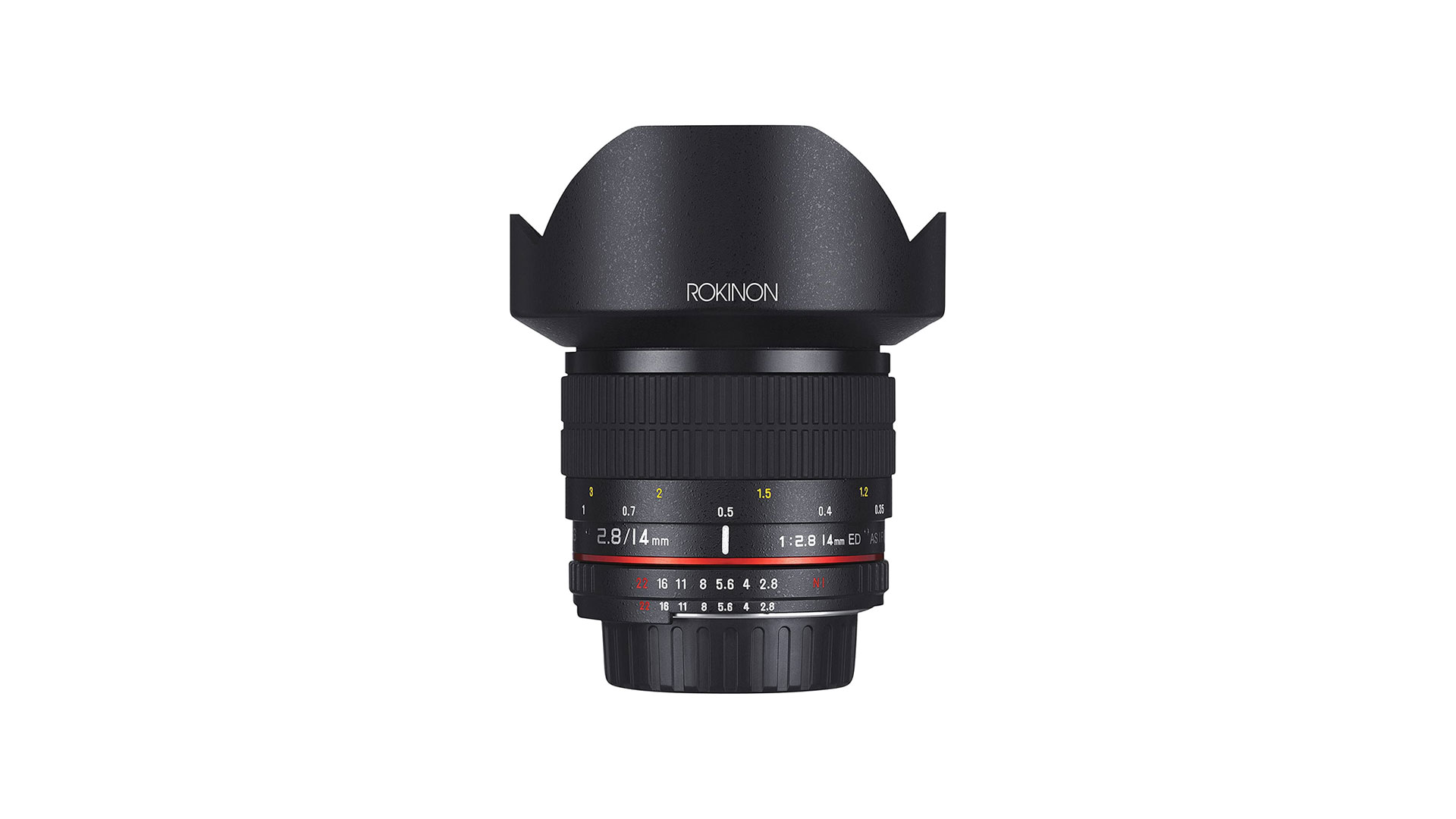Space Verdict
The Rokinon/Samyang 14mm f/2.8 lens is a great way to get an extremely wide field of view without breaking the bank.
Pros
- +
Extremely wide
- +
Reasonably fast
- +
Nice and cheap
Cons
- -
Against
- -
Distortion
- -
All-manual
- -
Fixed hood
Why you can trust Space.com
Extremely wide and extremely cheap may sound like a bit of an insult, but to photographers, it can be the Holy Grail.
Type: Prime, full-frame compatible
Compatibility: Canon EF (tested), Nikon F, Nikon Z, Sony FE
Focal range: 14mm
Aperture range: f/2.8 - f/22
Thread size: None
Weight: 1.1lb
The Rokinon/Samyang 14mm lens is about as wide as you can go on one of the best cameras for astrophotography without fisheye distortion, dropping your aperture lower than f/2.8, or spending a lot more money, making it an enticing lens for astrophotographers and one of our best lenses for astrophotography.
Alongside taking in vast swathes of the night sky with its 115° field of view, a 14mm lens can be used for getting up really close to things, capturing the inside of rooms, or fitting the majesty of entire mountains in the frame. It’s a specialist focal length, certainly, but appeals to enough niches that having one in your lens collection isn’t a complete extravagance. That's why we rate it among the best lenses for astrophotography right now.
Rokinon/Samyang 14mm f/2.8 lens review: Design
- Not too heavy
- Bit of a strange shape
- Plastic body, metal mount
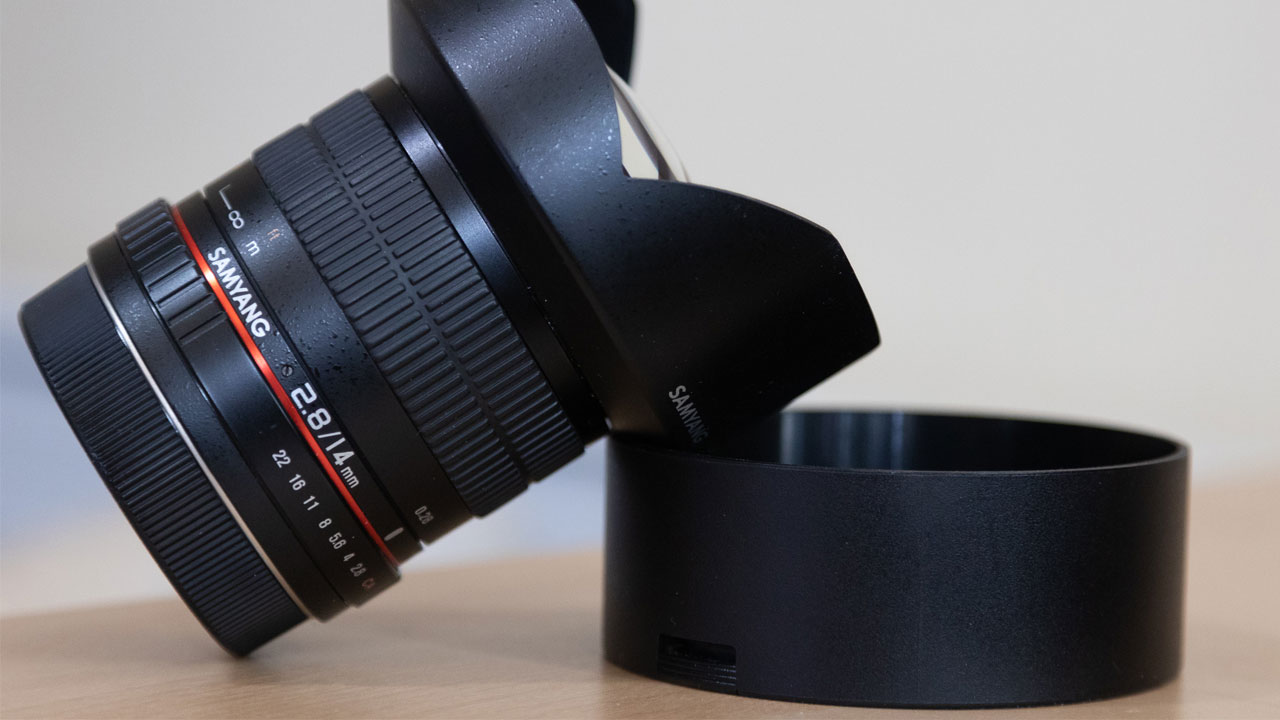
Looked at from the point of view of someone used to more modern lens releases, the fat black cylinders marked only by a maker’s name and focal length, their manual focus ring a slim afterthought that barely breaks their smooth plastic exterior with its grippy pattern, the Samyang 14mm f/2.8 is a curious beast.
First, there's the name. This is a Korean-made lens that’s sold under a couple of different names. This lens is commonly sold as Samyang or Rokinon, though the company that owns the names also has Vivitar, Bower, Opteka, and many other brands you’ll see on cheap lenses in its collection. There's no difference between the brands; they’re made in the same factory, just named differently. Ours is Samyang branded, so we’ll refer to it as that.

Then there's the shape. Because it’s a manual-focus prime, there's no need for autofocus motors or concentric sections of barrel, so where it meets the camera it appears narrower than many other lenses. At the other end, however, it suddenly yawns out into an enormous fixed petal hood that protects the bulbous glass element beneath.
Due to this fixed hood, the lens cap, which slides down to completely cover it and clicks into place, is also on the large side. Whereas the caps from most lenses can be slipped easily into a pocket as they are almost flat, you have to take a moment to think about where you’re going to keep this one.
Breaking space news, the latest updates on rocket launches, skywatching events and more!
The lens is made of a couple of different types of plastic, with the aperture ring noticeably smoother, while the mount is made of metal. It’s decent quality plastic, however, and the lens feels solid in the hand. Astrophotographers will appreciate the hard stop at infinity focus, which makes it much easier to keep the stars sharp without having to take your attention away from the camera screen.
- Related: Astrophotography time-lapse tips
Rokinon/Samyang 14mm f/2.8 lens review: Performance
Ultrawide lenses, even rectilinear ones like the Rokinon/Samyang 14mm f/2.8 lens, have a noticeable degree of distortion. And while the centre of the lens is acceptably sharp, even wide open the edges and corners leave a certain amount to be desired. This matters less in terms of astrophotography, as star trailing is more likely to elongate the stars from point light sources into short lines, but landscape photographers will definitely notice the corners being less sharp than the centre, while architectural photographers, who worship straight lines, will notice a wobbling bulge in the centre of their images.
Astrophotographers will also need to contend with the significant corner shading at f/2.8, something all 14mm lenses suffer from. The distortion and vignetting aren’t so bad that the best photo editing apps can’t take care of them in a single click, however.
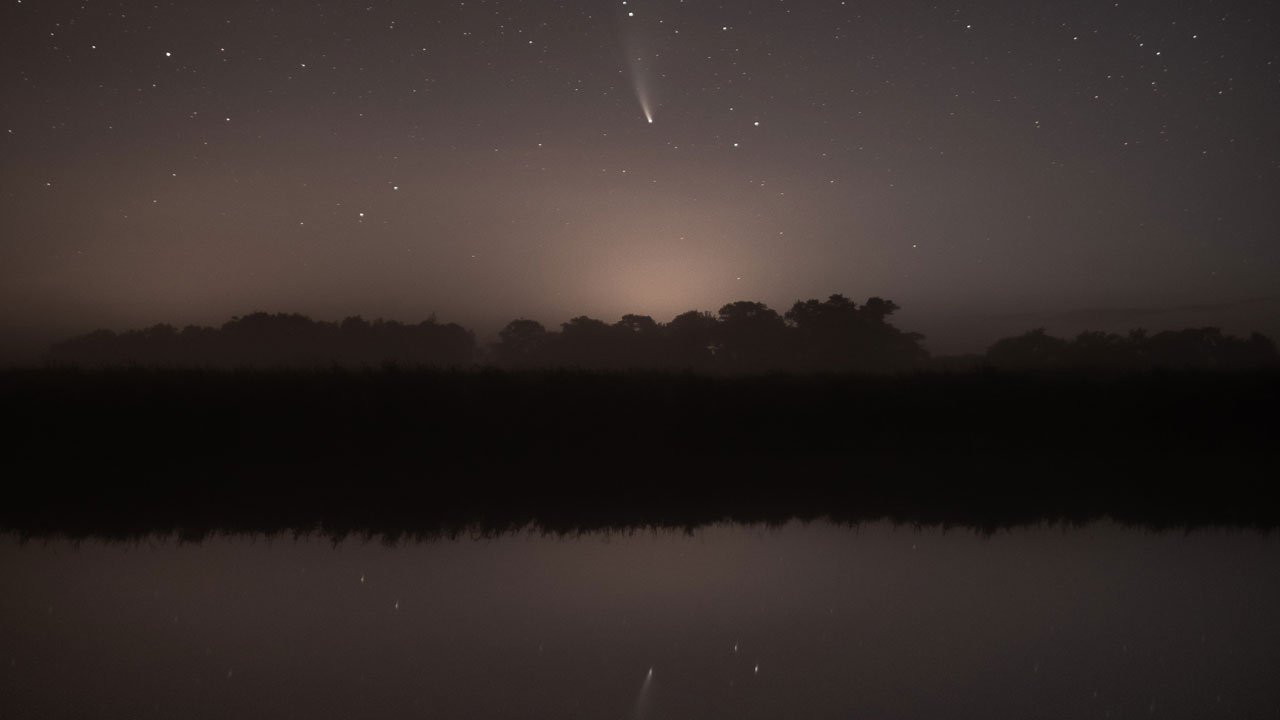
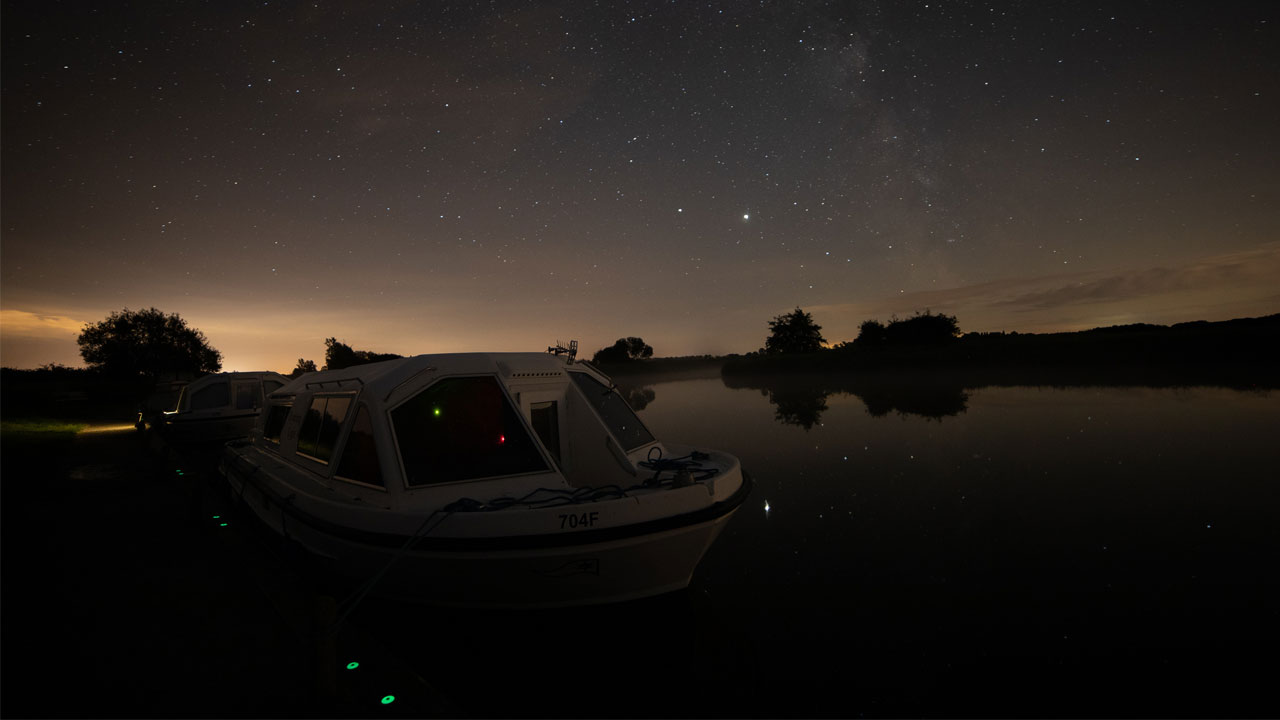
The maximum aperture of f/2.8 is not particularly fast, but then ultrawide lenses with wider apertures are rare. It’s certainly better to have than an f/4 or f/5.6 lens, as each additional stop doubles the amount of light reaching the sensor, making it easier to pick up faint objects without star trailing becoming a problem. You can expose for 30 seconds with the Rokinon/Samyang 14mm f/2.8 lens and get only the slightest trailing in the corner of the image, while stars in the center remain as points. Dropping to 20 seconds improves matters. If shooting star trails, you’ll therefore need to stack a lot of 30-second frames to get the full effect, so expect to leave your camera outside for several hours.
On top of this, there are the usual problems with ultrawide lenses. Place a subject close to the Rokinon/Samyang 14mm f/2.8 lens, and things like their nose will appear elongated. Figures too close to the edge will be stretched, and the whole image will take on an elongated, surreal look. This isn’t a lens for serious, frame-filling portraiture, but it can be used to place a subject in context as a smaller part of a bigger picture, the short focal length meaning you don’t need to stand too far away to manage it.
The Rokinon/Samyang 14mm f/2.8 lens can also be challenging to use as every aspect of it is manual. Anyone who used a film SLR before the advent of autofocus and camera-controlled aperture will find the old skills coming back, though. Put your camera in Aperture Priority mode, set the aperture on the lens’ ring (even at f/2.8, depth of field is considerable) then focus, or set hyperfocal distance. Only then are you ready to take a picture (an AF version is available in some mounts, but doubles the price). On a bright day, stopping down to f/8 might be all you need to do, but for astro work you’re going to want to be wide open at f/2.8 to make the most of the available light, so using your camera’s screen to zoom in and make sure the stars are as sharp as possible is the key to success.
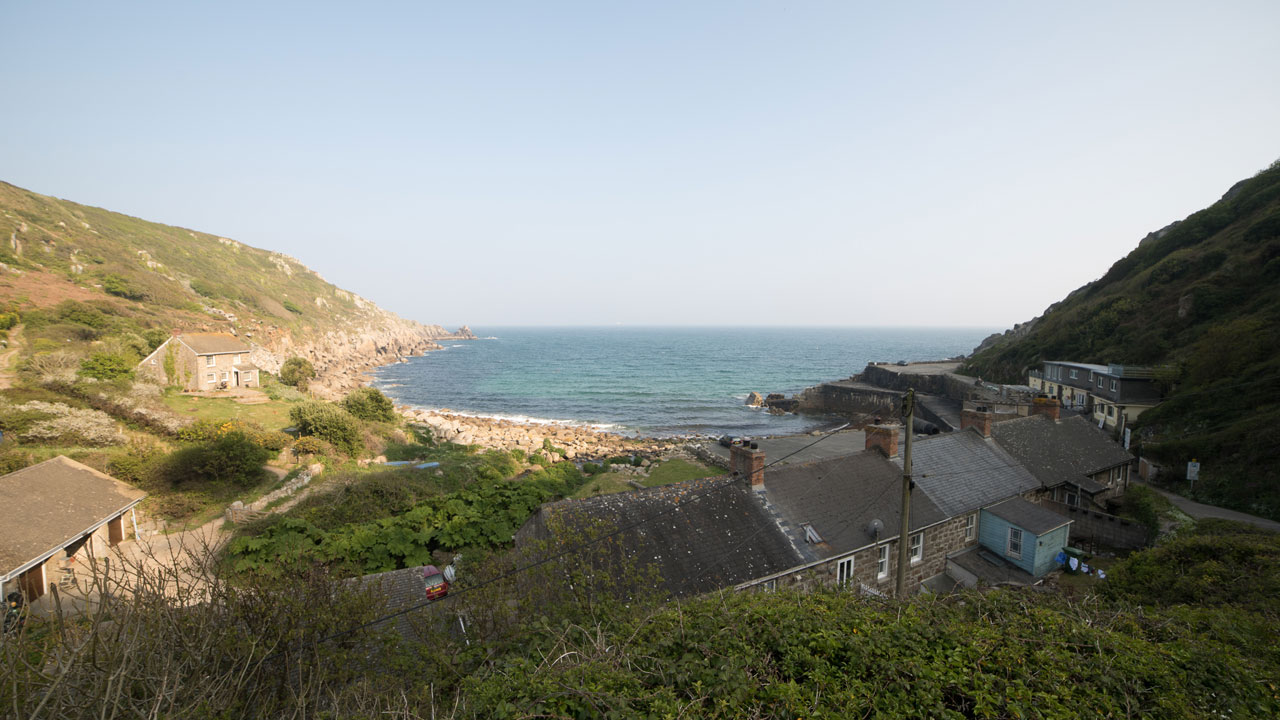

Should you buy the Rokinon/Samyang 14mm f/2.8 lens?
If you’re looking for an inexpensive (cost is relative, and camera lens prices can be eye-wateringly high) ultrawide lens for astrophotography or landscape/architecture use, then there's very little else on the market to touch the Rokinon/Samyang 14mm f/2.8 lens. Anyone who wants to get started with photographing the night sky will appreciate its f/2.8 aperture and ability to fit enormous areas of the cosmos into one frame.
It has its downsides, but things like distortion can be fixed in post-processing, and clever composition can reduce the negative effects of vignetting and soft corners.
This may look like a specialist lens, but if you want to start shooting night-sky images, it’s a great entry point for anyone with a full-frame DSLR.
If this product isn’t for you
With the same focal length as the Rokinon/Samyang 14mm f/2.8 lens, and an even wider aperture to let in even more of that lovely starlight, the Sigma 14mm F1.8 DG HSM ART lens adds autofocus but will set you back three or four times as much as the Samyang.
The Rokinon/Samyang 24mm f/1.4 is another manual lens, but with a light-gobbling aperture two stops faster than the Rokinon/Samyang 14mm f/2.8 lens. This lens is not as wide, but is still a great choice for the night sky, and has all sorts of other applications too. It doesn’t distort as much, and its corners are sharper than the Samyang 14mm, though it’s slightly more expensive.

Ian has been a journalist for over 20 years. He's written for magazines and websites on subjects such as astronomy, quantum physics, keeping fish, PC hardware, photo editing and gardening. Ian was also editor of Windows Help and Advice magazine and the Discover Science bookazines. In his spare time he has a pet tortoise and grows his own vegetables, but wishes he had more time for photography.
